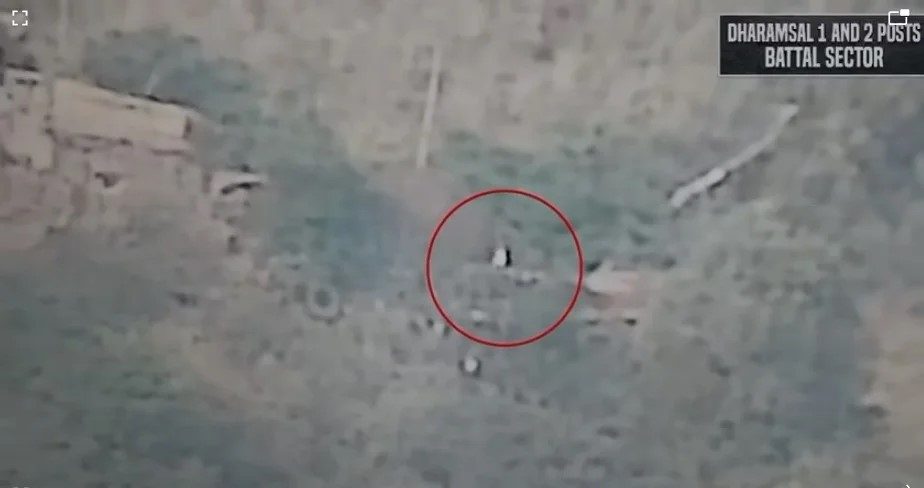On May 7, 2025, a significant development unfolded on the Line of Control (LoC), the heavily militarized border between Pakistan and India. In an unexpected turn of events, the Indian Army was forced to wave a white flag, signaling their defeat and submission after a strong retaliatory response from the Pakistan Armed Forces. The incident took place in the Chora Complex area, where the Pakistani military’s timely and effective counteraction dealt a substantial blow to the Indian forces. This event highlights the ongoing tensions between the two nuclear-armed neighbors, with both sides constantly engaged in military and diplomatic struggles.
The Line of Control, a sensitive and volatile region, has long been the site of frequent skirmishes and military engagements between India and Pakistan. Both countries have claimed the disputed territory of Kashmir, and their rivalry has led to numerous conflicts since their independence in 1947. Despite numerous ceasefire agreements and peace talks, clashes continue, often escalating into violent confrontations. The military standoff in the Chora Complex area was another example of this long-standing animosity.
On the fateful day, reports from Pakistani media revealed that Indian troops-initiated hostilities, which were met with a swift and forceful response from the Pakistan Army. The Pakistani forces, known for their highly disciplined and skilled approach, quickly gained the upper hand. The exchange of artillery fire and gunfire escalated, resulting in heavy casualties and equipment losses for the Indian Army. In the face of mounting pressure and losses, the Indian forces, unable to sustain the attack, resorted to waving a white flag—an internationally recognized symbol of surrender and the acknowledgment of defeat.
This act of waving a white flag was significant for several reasons. Traditionally, a white flag is used in military confrontations to signify the desire to negotiate, retreat, or surrender. In this context, it marked India’s acknowledgment of the Pakistan Army superior position and an implicit admission that they were unable to continue their aggression. Such a move is rare in modern warfare, especially in the context of the ongoing hostilities between India and Pakistan. The image of the white flag waving from the Indian side of the LoC quickly became a symbol of India’s defeat in this particular skirmish.
The response from Pakistan was one of military pride and strategic success. The Pakistan Armed Forces, led by the Inter-Services Public Relations (ISPR), emphasized that this successful operation demonstrated the military’s preparedness to defend the country’s territorial integrity against any external threat. According to the Pakistani military spokesperson, the operation was a clear demonstration of Pakistan’s capacity to swiftly neutralize any form of aggression. The defense forces also underscored that the use of white flags by India reflected their inability to withstand Pakistan’s retaliation, signaling a decisive and embarrassing defeat for the Indian Army.
This military encounter adds another layer to the complex relationship between Pakistan and India, especially regarding the Kashmir issue. Both countries have historically maintained hardened stances on the region, and any military action, no matter how minor, has the potential to escalate into a larger conflict. Although the Pakistan Army’s actions on May 7 may have been a response to a local skirmish, it serves as a reminder that tensions can quickly rise on the LoC and result in consequences far beyond the immediate battlefield.
It is also essential to recognize the role of international diplomacy in such conflicts. While the military actions themselves often take center stage, the aftermath of such engagements requires careful handling to prevent a full-scale war. The international community, including the United Nations and major global powers, has long called for de-escalation and peace talks between India and Pakistan. However, despite these calls, the situation on the ground remains tense, with both countries unwilling to back down from their respective positions on Kashmir.
The act of waving a white flag by the Indian Army could also have broader implications for future military engagements on the LoC. It could set a precedent for how future confrontations are managed, with both sides aware of the potential for quick escalation. Pakistan’s swift military response to this challenge has likely sent a strong message to India, signaling that any further aggression will not be tolerated.
In conclusion, the event of May 7, 2025, serves as a poignant reminder of the volatile and dangerous nature of the relationship between India and Pakistan. The Indian Army’s decision to wave a white flag and admit defeat underscores the complexity of military confrontations in the region and highlights the importance of effective and rapid military responses. While this incident may have been a localized confrontation, it holds broader implications for the ongoing struggle over Kashmir and the broader geopolitical dynamics in South Asia. The situation remains fragile, and the need for diplomatic engagement and conflict resolution has never been more urgent.
Reference: لائن آف کنٹرول پر پاک فوج کی جوابی کارروائی،بھارت نے سفید جھنڈا لہرا کر شکست تسلیم کر لی












